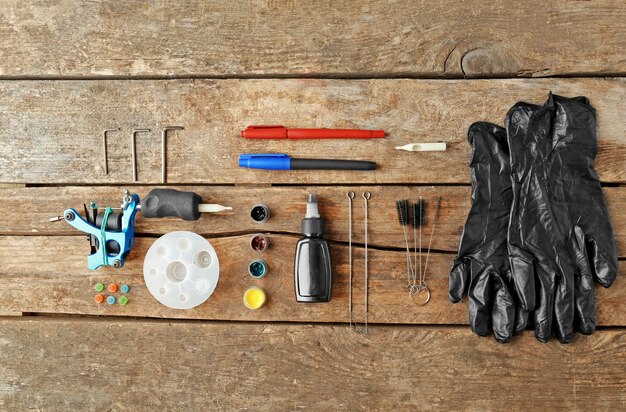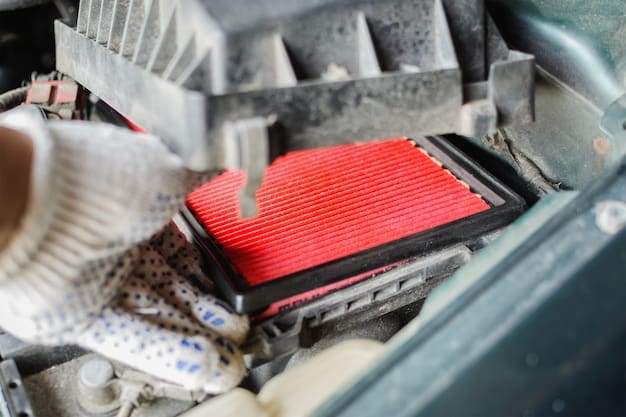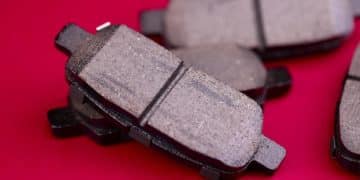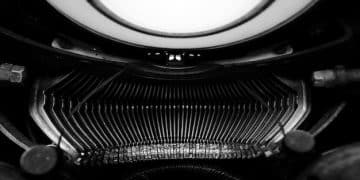The Ultimate Guide to Detailing Your Car’s Engine Bay Like a Pro

The ultimate guide to detailing your car’s engine bay involves carefully cleaning and protecting all components, removing dirt, grime, and grease buildup while avoiding damage to sensitive parts to improve its appearance and prevent potential issues.
Your car’s engine bay, often overlooked, is a critical area that benefits significantly from regular detailing. This the ultimate guide to detailing your car’s engine bay will help you get started.
Why Detailing Your Car’s Engine Bay Matters
Detailing your car’s engine bay is about more than just aesthetics. It plays a crucial role in maintaining your vehicle’s overall health and performance. A clean engine bay allows for easier detection of leaks and potential problems, prevents overheating by ensuring proper ventilation, and helps maintain the resale value of your car.
Having a clean engine bay improves the overall aesthetic appeal of your car, showing pride in ownership and attention to detail. It’s a rewarding task that, although time consuming, yields significant benefits.
Benefits of a Clean Engine Bay
Here are the primary benefits of keeping the engine bay clean:
- Early Problem Detection: A clean engine makes it easier to spot leaks, worn hoses, and other potential issues before they escalate.
- Improved Cooling: Removing grime and dirt buildup allows for better heat dissipation, which prevents overheating.
- Enhanced Aesthetics: A clean engine bay looks great and demonstrates your attention to detail.
- Increased Resale Value: Potential buyers will appreciate a well-maintained engine bay, which can positively influence your car’s resale value.
In conclusion, detailing your car’s engine bay is an investment in the longevity and performance of your vehicle. It not only enhances its appearance but also provides practical benefits that contribute to its overall health and value.
Essential Tools and Products for Engine Bay Detailing
Before diving into the detailing process, it’s crucial to gather the right tools and products. Using the appropriate equipment ensures a safe and effective cleaning process, preventing damage to sensitive engine components. This section outlines the essential items you’ll need to detail your engine bay like a professional.
Having the right tools and products will make the job not only more efficient but also safer for you and your vehicle. Preparation is key. Let’s take a look at what you will need.

Cleaning Supplies
Proper cleaning supplies are critical for removing dirt, grime, and grease without damaging engine components. Here are some essential items:
- Engine Degreaser: A high-quality degreaser is essential for breaking down stubborn oil and grease deposits.
- All-Purpose Cleaner (APC): An all-purpose cleaner is useful for cleaning various surfaces and can be diluted for different levels of grime.
- Detailing Brushes: Different sizes and shapes of brushes will help you reach tight spaces and clean intricate components.
- Microfiber Cloths: These are perfect for wiping down surfaces and ensuring a streak-free finish.
Selecting the correct cleaning solutions is key to achieving a spotless engine bay while protecting it from damage. The combination of dedicated products and the right tools will help you safely restore the engine to its ideal appearance.
Safety Precautions Before You Begin
Safety should always be a top priority when working on your car, especially in the engine bay where there are many sensitive components. Taking the necessary precautions not only prevents injury but also protects your vehicle from potential damage. In this section, we will cover key safety steps that you should take before starting your engine bay detailing.
These precautions are designed to minimize any risks involved in using cleaning products and handling components around the engine.
Essential Safety Steps
Follow these safety steps to ensure a safe and successful detailing session:
- Disconnect the Battery: Disconnecting the negative terminal prevents any accidental electrical issues.
- Protect Electrical Components: Cover any exposed electrical parts with plastic bags to prevent water damage.
- Wear Protective Gear: Gloves and eye protection will protect you from chemicals and debris.
- Work in a Well-Ventilated Area: Proper ventilation will prevent you from inhaling harmful fumes.
Compliance with these safety guidelines ensures a secure working environment, preventing injuries and potential damage to your car. Taking these precautions enables you to perform the cleaning process with assurance.
Step-by-Step Guide to Detailing Your Engine Bay
Now that you’ve gathered your tools, products, and taken the necessary safety precautions, it’s time to dive into the detailing process. This section provides a step-by-step guide to detailing your engine bay, ensuring a meticulous and effective cleaning.
Follow each step carefully for the best results and to avoid any potential issues.
Stage 1: Preparation
Begin by preparing the engine bay for cleaning:
- Allow the engine to cool completely.
- Disconnect the negative battery terminal.
- Cover sensitive electrical components with plastic bags.

Stage 2: Pre-Cleaning
Remove loose debris and grime before applying cleaning solutions:
- Use a soft brush to remove any loose dirt or leaves.
- Wipe down any easily accessible surfaces with a damp microfiber cloth.
Stage 3: Cleaning
Apply the cleaning agents and start scrubbing:
- Spray the engine degreaser on heavily soiled areas, allowing it to soak for 5-10 minutes.
- Use detailing brushes to scrub away the grease and grime.
- Rinse the engine bay with a gentle stream of water, avoiding direct contact with electrical components.
By following each step in the order presented, you not only clean your engine bay effectively but also do it efficiently. Careful attention to detail at each stage results in a professional-level clean that highlights your vehicle’s aesthetics and maintenance levels.
Protecting and Finishing Touches
After thoroughly cleaning your engine bay, it’s important to protect the surfaces to maintain their appearance and prevent future grime buildup. Applying protectants and performing finishing touches will enhance the look of your engine bay and help it stay cleaner for longer.
Proper protection and finishing not only beautify but also preserve the components from environmental damage.
Applying Protectants
Use protectants to preserve and enhance the look of hoses, plastic components, and metal surfaces:
- Plastic and Rubber Protectant: Apply this to hoses and plastic parts to keep them supple and prevent cracking.
- Metal Polish: Use a metal polish on any exposed metal components to give them a shine.
Finishing Touches
Give your engine bay a professional look with these final touches:
- Drying: Use a clean, dry microfiber cloth to remove any remaining water spots.
- Inspection: Double-check all areas to ensure no spots were missed and that all connections are secure.
With these finishing touches, your engine bay will not only be clean but also have lasting protection against future grime. The application of protectants and careful attention to final details culminate in a showroom-quality result.
Maintaining Your Clean Engine Bay
Keeping your engine bay clean requires regular maintenance to prevent the buildup of dirt and grime. Establishing a routine cleaning schedule and adopting preventive measures will help maintain the cleanliness and appearance of your engine bay with minimal effort.
Regular maintenance will prevent build-up of dirt and will also help prolong the life of your engine components.
Regular Cleaning
Set a routine for keeping your engine bay clean:
- Weekly Check: Inspect your engine bay weekly, and wipe away any new dirt or spills with a damp cloth.
- Monthly Detail: Commit to a more thorough cleaning monthly, including using an all-purpose cleaner and detailing brushes.
Preventive Measures
Take preventive actions to help keep your engine bay clean:
- Regular Car Washes: Regularly washing your car helps prevent grime from accumulating in the engine bay.
- Address Leaks Promptly: Fix any leaks quickly to prevent oil and fluids from accumulating.
| Key Point | Brief Description |
|---|---|
| 🛠️ Preparation | Gather necessary tools, products, and safety gear. Disconnect the battery and protect electrical components. |
| 🚿 Cleaning | Apply degreaser and all-purpose cleaner, scrub grime with detailing brushes, and rinse gently. |
| 🛡️ Protection | Apply protectants to plastic and rubber parts, and polish metal components for a lasting shine. |
| 📅 Maintenance | Regularly check and clean the engine bay, addressing leaks promptly to prevent grime buildup. |
Frequently Asked Questions
▼
Avoid directly spraying electrical components, the air intake, and any exposed wiring. Cover these areas with plastic bags or use a gentle stream of water to rinse the engine bay.
▼
Detailing your engine bay every 3-6 months is generally sufficient. However, if you frequently drive in dirty conditions or notice excessive grime, more frequent detailing may be necessary.
▼
Using a pressure washer is not recommended, as the high pressure can damage sensitive components. A gentle stream of water from a garden hose is much safer and more effective.
▼
Use a high-quality, non-corrosive engine degreaser designed specifically for automotive use. Ensure it is safe for rubber and plastic components to avoid damage.
▼
After rinsing, immediately dry the engine bay with a clean microfiber cloth to prevent water spots. You can also use a leaf blower or compressed air to remove excess water.
Conclusion
Detailing your car’s engine bay not only enhances its appearance but also contributes to its overall health and maintenance. By following this ultimate guide, you can effectively and safely clean your engine bay, ensuring it stays in top condition and reflecting your dedication to vehicle care.





